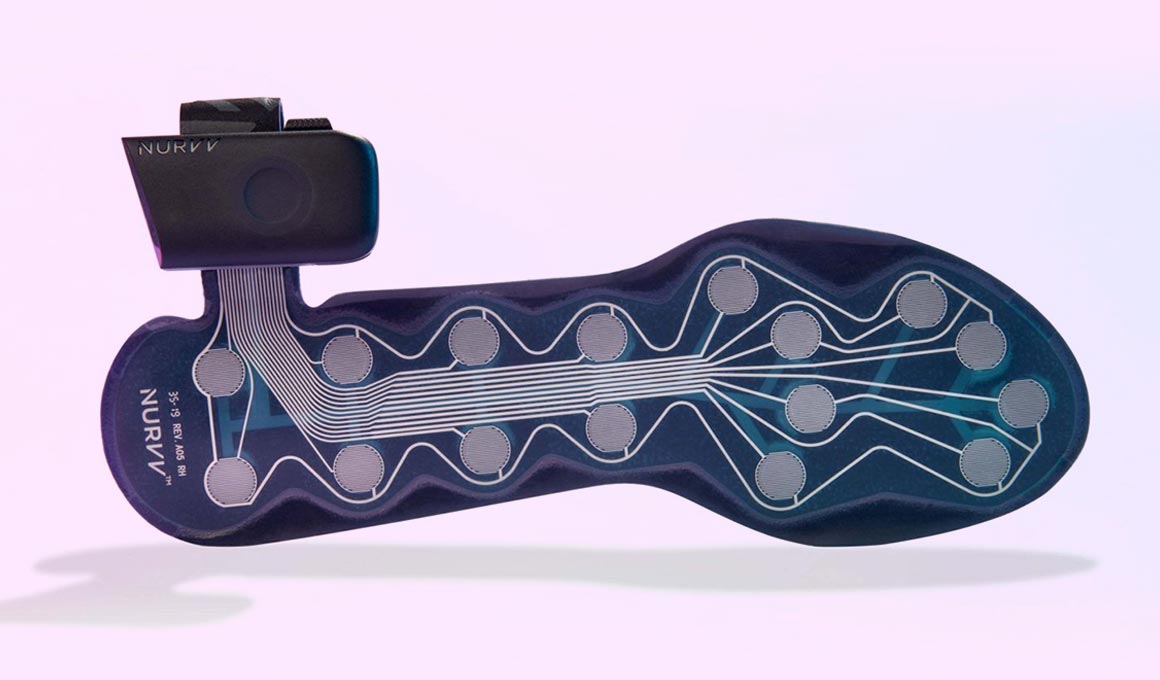![]()
Revolutionary Smart Insole Technology Redefines Everyday Health Monitoring
In a significant leap for wearable health technology, researchers have introduced a wireless, self-sustaining smart insole system that aims to transform how we keep track of physical health through daily movements. The cutting-edge device, detailed in the April 16, 2025 issue of Science Advances, combines advanced sensor technology with flexible materials and renewable energy sources to provide accurate, real-time health insights—all from within your footwear.
The Smart Sole of Tomorrow
Created by a collaborative research team spearheaded by scientists at The Ohio State University, the smart insole consists of 22 high-precision pressure sensors nestled within a soft, flexible composite. These sensors monitor intricate foot pressure patterns with exceptional accuracy, allowing the system to generate a detailed “map” of an individual’s movements throughout the day. Whether you’re walking your pet, running errands, or ascending stairs, this insole discreetly tracks your activity in the background.
The pressure data amassed is wirelessly sent to a smartphone app, which analyzes it through advanced machine learning algorithms. This empowers the system to identify and categorize eight unique motion states, including sitting, standing, walking, running, and climbing or descending stairs—with a high level of accuracy.
An Energy-Saving System with Longevity
What notably distinguishes this insole is its energy self-sufficiency. Researchers have integrated small, flexible perovskite solar cells on the upper surface of the shoes, enabling the device to harness energy from ambient light. This energy is stored in tiny lithium batteries situated in the arch of the insole—an ideal position since it experiences minimal foot pressure. This energy-efficient design renders the smart insole completely wireless and nearly maintenance-free.
In addition to eliminating the necessity for regular charging, the system is also designed for long-lasting use. Laboratory tests showed that the pressure sensors maintained their accuracy after 180,000 compression cycles—equating to months of daily use—without any noticeable decline in performance. The sensors also deliver consistent data across a wide pressure range, enhancing the device’s reliability during various levels of physical activity.
Digital Health Reimagined
“Human bodies continuously generate essential data,” states Jinghua Li, study co-author and assistant professor of materials science and engineering at The Ohio State University. “Often, we remain completely unaware of it. Our objective was to engineer technology that can unobtrusively capture these signals over time—to enable individuals to monitor their own health more effectively.”
By examining the evolving pressure patterns during various activities, the device can identify subtle changes in performance that may indicate the onset of a medical issue. For instance, a modification in walking gait might hint at the early stages of Parkinson’s disease, while changes in foot pressure could signal risks for diabetic foot ulcers or plantar fasciitis—conditions where early detection is vital for effective treatment.
Clinical Potential and Beyond
The system’s instantaneous feedback and discreet form factor present vast potential for both everyday users and health professionals. Physicians could utilize it to track rehabilitation progress, identify early indicators of musculoskeletal or neurological issues, or even customize physical therapy plans based on an individual’s gait and balance patterns.
Moreover, given the device’s discreet and flexible nature, users can wear it throughout the day without discomfort or interruptions to their routines. “The interface is flexible and quite slim, so even through repeated deformation, it can remain operational,” remarked Li. “The combination of the software and hardware means it isn’t as restricted.”
Insights from Pressure Mapping
Beyond medical uses, the data gathered by the insole provides intriguing insights into biomechanics. For example, during walking, foot pressure transitions smoothly from heel to toe, with the pressure duration comprising approximately half the time of each step. In running, the foot strikes the ground more suddenly, leading to nearly simultaneous pressure across all sensors, cutting contact time to around one-quarter of each stride. Such insights can enhance athletic training, ergonomic evaluations, and even footwear design.
What Lies Ahead?
Researchers expect that the smart insole technology may hit the commercial market within three to five years. Continuing development focuses on enhancing gesture recognition capabilities, expanding the variety of detectable movements, and fine-tuning the system for a broader range of users across different ages, weights, and health profiles.
For millions facing mobility challenges, this revolutionary insole presents an exciting new pathway for early diagnosis, preventive care, and recovery support—all through the basic act of walking.
As technology continues to integrate effortlessly with the human body, innovations like these symbolize not just progress—they represent a shift towards personalized, predictive healthcare entrenched in everyday life.
Support Science That Propels Us Forward
If you found this research insightful and believe in the importance of independent science journalism, consider backing our efforts. Your contributions—large or small—help ensure that breakthroughs like these reach the public and generate a meaningful impact. Thank you for fostering discovery and dialogue in science.
Read more about this breakthrough in Science Advances
